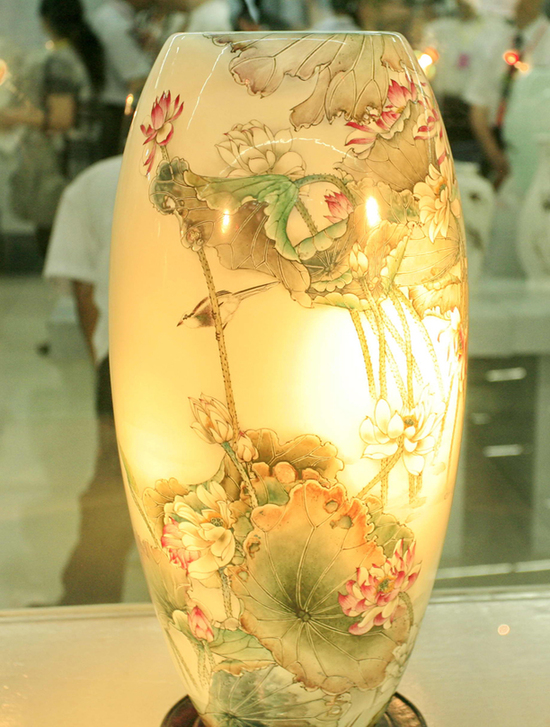Zibo, a birthplace of Chinese ceramics
Zibo is widely regarded as the birthplace of Chinese ceramics. Today, visitors to the city may still view dozens of well-preserved ancient kiln sites.
Actually, the city's connections to the porcelain industry dates back more than 10,000 years, according to discoveries made at an archeological dig in a cave of Yiyuan, a county of the city.
Its porcelain sector began to boom in the Three Kingdoms period (AD220-280), and had its heyday in the Song Dynasty (960-1279), when Zibo was the largest porcelain production center in northern China.
During the Qing Dynasty (1644-1911), thousands of people were still involved in porcelain production in the city.
 |
|
A fine ceramic bottle at Zibo international ceramics exposition in 2011. [Photo by Ju Chuanjiang/China Daily] |
Despite its historical reputation and time-honored traditional skills, what has really given the city a boost was its efforts to continuously experiment with the use of new materials and innovative technologies.
This has greatly improved the quality of the products and brought several major awards to the city.
Its soapstone and high-purity quartz china won third prize in the National Creation and Invention Awards, while its synthetic bone china secured the second prize in the National Technological Innovation awards, the highest prize ever achieved in the ceramics industry.
With the superb quality and high artistic value, Zibo-made ceramics have been used in the Great Hall of the People, the Diaoyutai State Guesthouse and Zhongnanhai, the central government complex, for several years. They have also been frequently presented to foreign guests as state gifts.
Its high-tech porcelain products have even been introduced in the aerospace, defense and electronic information sectors, which opens up a number of new opportunities for its ceramics business.
Today, Zibo is home to 278 ceramics enterprises with more than 100,000 employers, including more than 3,000 advanced craftsmen and 14 state-level art masters.
They have produced at least 6,000 different kinds of porcelain products, covering the sectors of household porcelain, ceramic crafts, building ceramics, ceramics for high-tech use, and ceramics machinery.
Its products have now been exported to more than 80 countries and regions, which bought in $330 million last year, up by 16 percent.
